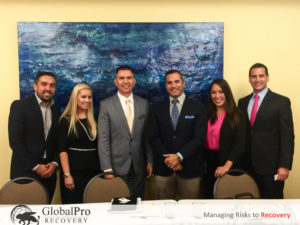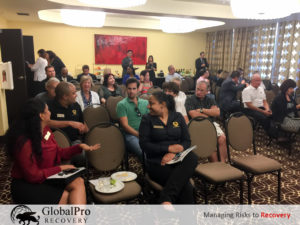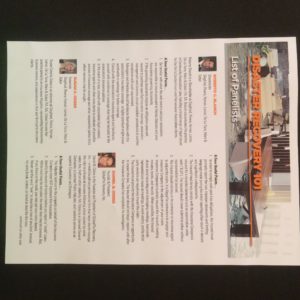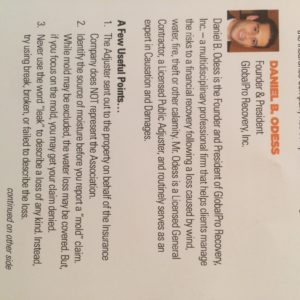‘Disaster Preparedness 101’ – Advice for Community Associations
 Do you know what to do if a hurricane threatens your region? What about a flood, fire or other natural disaster? GlobalPro Recovery President Daniel Odess was a featured panelist for “Disaster Preparedness 101,” an August 17 forum for community association board members, managers and other professionals at the Hotel Urbano in downtown Miami.
Do you know what to do if a hurricane threatens your region? What about a flood, fire or other natural disaster? GlobalPro Recovery President Daniel Odess was a featured panelist for “Disaster Preparedness 101,” an August 17 forum for community association board members, managers and other professionals at the Hotel Urbano in downtown Miami.
At the Brickell Homeowners Association seminar, experts from different professions discussed various topics that provided participants with practical advice to survive a disaster when it strikes. In his presentation, Odess emphasized the importance of pre-disaster planning, such as reviewing your insurance coverage on a regular basis, and understanding the limitations, exclusions and deductibles in today’s policies. Odess also discussed the post-disaster steps, including filing insurance claims and what associations should do when approached by restoration contractors.
“Any Florida community association should have a solid disaster plan in place that is updated regularly,” Odess said. “It’s also important to know what you should after a disaster in order to avoid jeopardizing your insurance claim or making a costly reconstruction mistake. Associations should always turn to experienced professionals to ensure they are filing their claims properly in order to recover their losses.”
Important Topics:
- The Adjuster sent out to the property on behalf of the Insurance Company does NOT represent the Association.
- Identify the source of moisture before you report a “mold” claim. While mold may be excluded, the water loss may be covered. But, if you focus on the mold, you may get your claim denied.
- Never use the word “leak” to describe a loss of any kind. Instead, try using break, broken, or failed to describe the loss.
- Mitigate. Stop. Recover. Rebuild. Your policy only requires you to mitigate the damages; it does not mandate that you start repairs. As a fiduciary to an Association, protect the unit owners’ interest and don’t start repairs until you are satisfied with the Insurance Company’s claim payment.
- Immediately take photographs following a loss and throughout the mitigation and reconstruction process. Make sure you take overall and close up photographs; capture the entire damage area.






